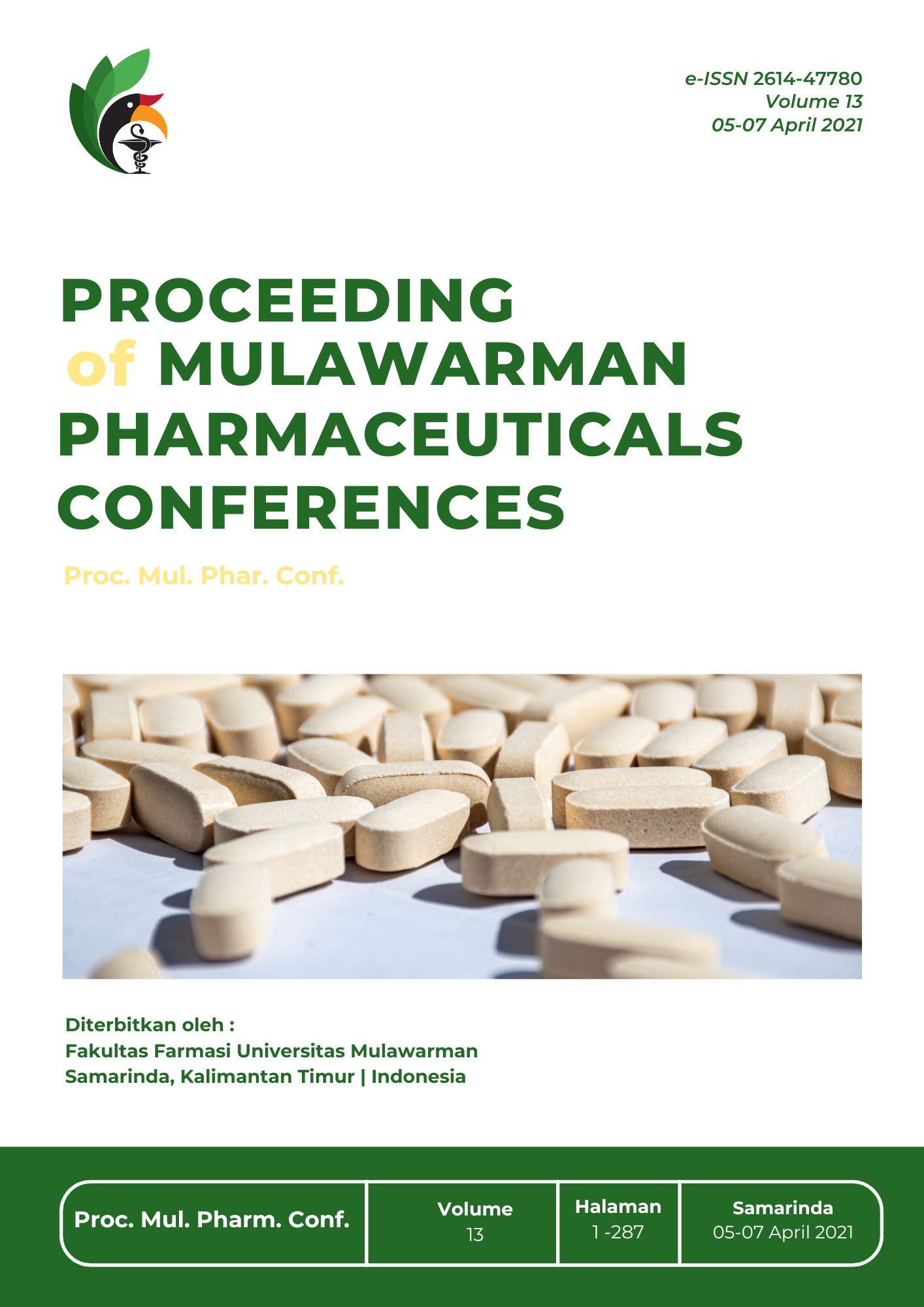Antibacterial Activity of Bagore Stem Extract (Caesalpinia bonduc (L.) ROXB)
DOI:
https://doi.org/10.30872/mpc.v13i.325Keywords:
antibakteri, batang bagoreAbstract
Bagore (Caesalpiniabonduc (L.) Roxb) from the Febaceae / caesalpiniaceae family is a thorny shrub. This plant is reported to have some activity and also has metabolites of alkaloids, flavonoids, saponins, tannins and triterpenoids. The purpose of this study was to determine the antibacterial activity of bagore stem extract. The extraction method used is the maceration method using ethanol solvent and the yield of 5.5% bagore stem extract followed by the determination of secondary metabolites. The stem extract was found to have positive results of flavanoid and saponin compounds which have antibacterial activity. Testing for the inhibition of Streptococcus aureus and Propionibacterium acnes as gram-positive bacteria and Escherichia coli as gram-negative bacteria using the well diffusion method. The extract concentrations used were 10%, 20%, and 30%, and the negative control used water and ethanol. the results of antibacterial tests against Streptococcus aureus bacteria obtained the respective inhibition zone diameters; 11,836 mm; 13,671 mm and for Propionibacterium acnes bacteria obtained the diameter of the inhibition zone for each success; 10,781 mm; 13,169 mm; 14,190 mm, while the Escherichia coli bacteria obtained the respective inhibition zone diameter; 10,552 mm; 13,436 mm; 14,036 mm
References
[1] Asolkar, L.V., Kakkar, K.K., Chakre, O.J. 1992. Second Supplement to Glossary of Indian Medicinal Plants with Active Principles, Part 1 (150). PID-CSIR, New Delhi,
[2] Gaur, R.L., Sahoo, M.K., Dixit, S., Fatma, N., Rastogi, S., Kulshreshtha, D.K., Chatterjee, R.K., Murthy, P.K. 2008. Antifilarial activity of Caesalpinia bonducella against experimental filarial infections. Indian Journal of Medicinal Research, 128: 65?70.
[3] Kirtikar, K.R., Basu, B.D. 1988. Indian medicinal plants. 2nd edition, Dehradun.
[4] Sani, R.N., Fithri C.N., Ria D.A., dan Jaya M.M. 2014. Analisis Rendemen dan Skrining Fitokimia Ekstrak Etanol Mikroalga Laut Tetraselmis chuii. Jurnal Pangan dan Agroindustri. 2(2):121-126.
[5] Sastrohamidjojo, H. 1996. Sintesis Bahan Alam. Yogyakarta: Gadjah Mada University Press.
[6] Sujatmiko, Y. A. 2014. Aktivitas Antibakteri Ekstrak Kayu Manis (Cinnamomum burmannii B.) dengan Cara Ekstraksi yang Berbeda terhadap Escherichia Coli Sensitif dan Multiresisten Antibiotik. Skripsi. Surakarta : Universitas Muhammadiyah Surakarta.
[7] Juliantina, Farida. 2008. Manfaat Sirih Merah (Piper crocatum) Sebagai Agen Anti Bakterial Terhadap Bakteri Gram Positif Dan Gram Negatif. Jurnal kedokteran dan kesehatan indonesia. Vol. 1. No. 1.
Downloads
Published
Issue
Section
License
Copyright (c) 2021 Muhammad Fauzi Zainal Abidin, Risna Agustina, Angga Cipta Narsa (Author)

This work is licensed under a Creative Commons Attribution-NonCommercial 4.0 International License.


